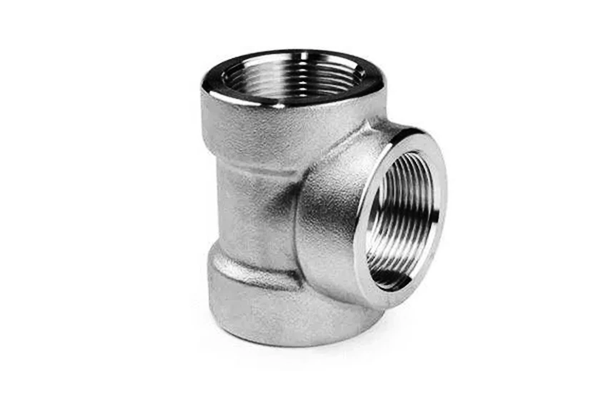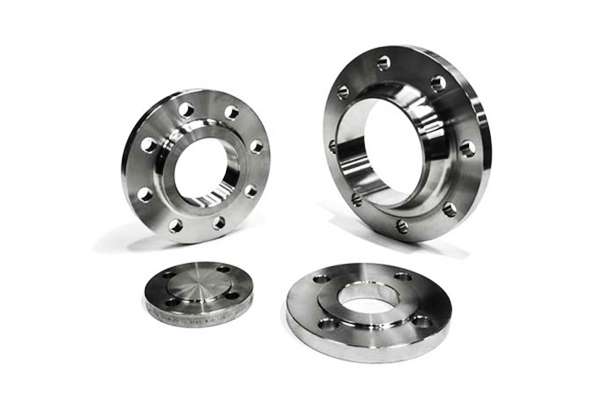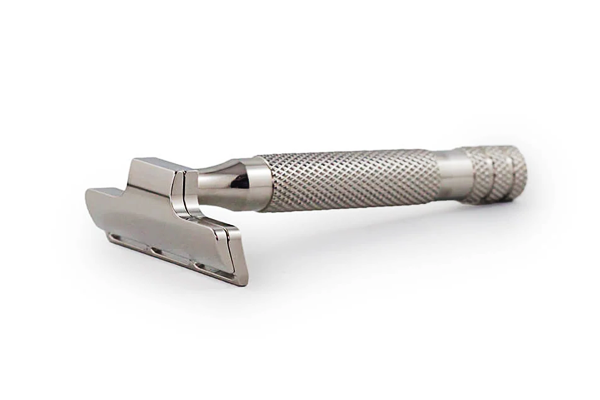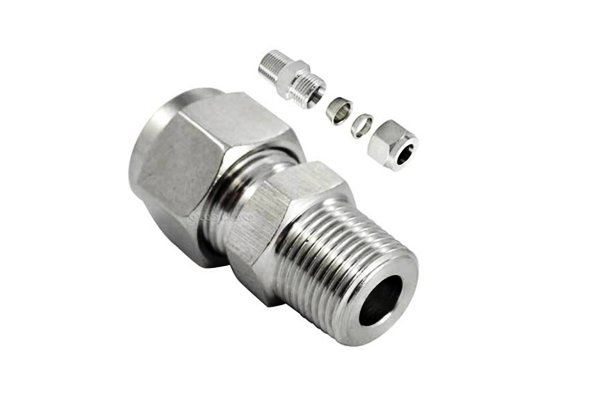1. Introduction
904L stainless steel (UNS N08904/EN 1.4539) stands at the pinnacle of the super‑austenitic family, prized for its exceptional corrosion resistance, mechanical strength, and formability.
Developed jointly by Outokumpu and AK Steel in the 1970s to meet the rigors of the chemical processing industry,
904L stainless steel filled a critical gap between conventional 300‑series grades (e.g., 304L, 316L) and more exotic nickel‑based alloys.
Today, it finds key markets in the petrochemical, marine, power generation, and high‑purity pharmaceutical sectors.
This article examines stainless steel 904L’s composition, properties, fabrication, and applications to guide material selection in demanding environments.
2. Chemical Composition & Metallurgical Basis
904L stainless steel is a super-austenitic alloy designed to provide exceptional corrosion resistance in harsh chemical and marine environments.

Its performance derives from a meticulously engineered chemical composition that enhances resistance to pitting, crevice corrosion, and stress-corrosion cracking, particularly in chloride-bearing and acidic conditions.
Nominal Chemical Composition of 904L (UNS N08904) Stainless Steel
| Element | Symbol | Typical Content (wt. %) | Function / Role |
| Iron | Fe | Balance (~50.0–55.0%) | Base matrix of the alloy; supports all alloying elements |
| Chromium | Cr | 19.0–23.0 | Promotes passivation; improves resistance to general and localized corrosion |
| Nickel | Ni | 23.0–28.0 | Stabilizes austenitic phase; increases ductility and chloride SCC resistance |
| Molybdenum | Mo | 4.0–5.0 | Enhances pitting and crevice corrosion resistance (PREN boost) |
| Copper | Cu | 1.0–2.0 | Increases resistance to non-oxidizing acids (e.g., H₂SO₄, H₃PO₄) |
| Carbon | C | ≤ 0.02 | Minimizes carbide precipitation; prevents sensitization |
| Manganese | Mn | ≤ 2.0 | Deoxidizer; assists in sulfur resistance and hot workability |
| Silicon | Si | ≤ 1.0 | Enhances oxidation resistance; used as a deoxidizer in steelmaking |
| Phosphorus | P | ≤ 0.045 | Residual element; kept low to avoid embrittlement |
| Sulfur | S | ≤ 0.035 | Residual element; minimized to maintain ductility and corrosion performance |
| Nitrogen | N | ≤ 0.10 | Strengthens the austenitic matrix; improves pitting resistance |
Metallurgical Characteristics
- Fully Austenitic Microstructure: The high Ni and Cr content stabilizes a single-phase austenitic matrix, even after welding or cold working,
eliminating the risk of ferrite or sigma phase formation that can degrade corrosion performance. - Low Carbon (L-grade): With C ≤ 0.02%, 904L stainless steel is highly resistant to intergranular corrosion, even in the as-welded condition, and meets ASTM A262 Practice E requirements.
- Stabilization Against Sensitization: Unlike some other stainless steels, 904L doesn’t require titanium (Ti) or niobium (Nb) stabilizers
because its extremely low carbon and rapid quench annealing prevent chromium carbide precipitation. - Alloy Synergy: The synergy between Mo, Cu, and Ni improves corrosion resistance in reducing and mixed acid environments, including sulfuric acid up to 40 % concentration at ambient temperatures.
3. Physical & Mechanical Properties of 904L Stainless Steel
| Property | 904L Stainless Steel | Notes |
| Density | 8.03 g/cm³ | Slightly higher than 316L (7.99 g/cm³) |
| Melting Range | 1,370–1,420 °C | Similar to other austenitics |
| Thermal Conductivity | 14 W/m·K (at 100 °C) | Approximately 30% lower than 316L |
| Coefficient of Expansion | 16 ×10⁻⁶ /K (20–100 °C) | Comparable to 316L |
| Specific Heat | 500 J/kg·K | — |
| Tensile Strength | 520–760 MPa | Annealed condition |
| Yield Strength | 200–350 MPa | Broad range due to fabrication variability |
| Elongation | ≥ 40 % | Exceptional ductility |
| Hardness (Brinell) | 200–240 HB | Moderate hardness, amenable to forming |
4. Corrosion Resistance & Durability
Stainless steel 904L’s hallmark is its outstanding resistance across a spectrum of corrosive media:
- General Corrosion: Virtually negligible attack in neutral and mildly oxidizing environments.
- Pitting/Crevice Resistance: With a Pitting Resistance Equivalent Number (PREN) approaching 40, 904L outperforms 316L (PREN ≈ 24) and matches some super‑austenitics such as 254 SMO.
- Chloride Stress‑Corrosion Cracking (SCC): Superior resistance compared to 316L; usable in chloride up to 150 °C, whereas 316L is limited to ~ 60 °C.
- Acidic Environments: Copper addition affords exceptional resistance to sulfuric and phosphoric acids down to 10 % concentration at room temperature.
- High‑Temperature Oxidation: Scales form slowly up to 870 °C, enabling intermittent service in thermal‐cycling applications.
5. Fabrication & Welding of 904L Stainless Steel
Stainless steel 904L’s super‑austenitic chemistry delivers unmatched corrosion resistance and toughness, but it also demands careful handling during forming and joining to preserve its performance.

Forming & Machining
- Cold Working:
-
- 904L stainless steel can be deep‑drawn, bent, or roll‑formed in the annealed condition (20 °C) with elongations ≥ 40 %.
- Because it work‑hardens rapidly, multi‑stage forming often requires intermediate anneals at 1,040 °C to restore ductility.
- Machinability:
-
- Rated at ~ 25 % of the AISI B1112 standard, 904L requires lower cutting speeds (30–60 m/min) and coated‑carbide tooling (TiN, TiCN, or AlTiN).
- High‑pressure coolant (≥ 50 bar) and feed rates of 0.1–0.3 mm/rev help control heat and prevent built‑up edge formation.
Welding Techniques
Recommended Processes
- Tungsten Inert Gas (GTAW/TIG): Provides precise heat control, ideal for thin‑wall sections and critical joints.
- Metal Inert Gas (GMAW/MIG): Suited for higher deposition rates on thicker sections.
- Submerged Arc (SAW): Used for large weldments where productivity outweighs precision.
Filler Metal & Parameters
- Filler Alloys: ERNiCrMo‑3 (Alloy 625) or ER385 (904L equivalent) ensure the weld metal matches base‑metal corrosion performance.
- Heat Input: Keep between 0.3–0.5 kJ/mm to minimize hot‑cracking risk.
- Interpass Temperature: Maintain below 150 °C. No preheat is typically required.
- Shielding Gas: 100% argon or argon‑helium mixes at 12–20 L/min flow for optimal arc stability.
Mitigating Weld Defects
- Intergranular Corrosion: Avoid extended dwell times in 600–900 °C sensitization range. If welding large structures, perform solution annealing at 1,040 °C and rapid quench to re‑dissolve chromium carbides.
- Solidification Cracking: Use joint designs with generous root radii and controlled cooling rates. Preheat thin sections to 100–150 °C where necessary to reduce thermal gradients.
Post‑Weld Treatment
- Solution Annealing: 1,040 – 1,100 °C for 15–30 min, followed by water quenching, restores full austenitic structure and maximizes corrosion resistance.
- Pickling & Passivation: A nitric‑based bath removes heat tint, whereas citric acid passivation rebuilds the protective Cr₂O₃ layer.
6. Applications of 904L Stainless Steel
Stainless steel 904L’s exceptional corrosion resistance and mechanical robustness make it ideal for demanding environments. Below are its primary application sectors and representative components:

Chemical Processing
- Sulfuric Acid Plants: Heat‑exchanger tubes, reactor shells, transfer pipelines, pump casings
- Phosphoric Acid Facilities: Storage tanks, mixing vessels, control valves, pipe fittings
- General Chemical Synthesis: Distillation columns, reaction vessels, storage tanks
Marine & Offshore
- Subsea Infrastructure: Pipeline risers, wellhead connectors, subsea manifolds
- Shipbuilding: Propeller shafts, seawater strainers, deck hardware, intake grilles
- Desalination: RO membrane housings, high‑pressure feed pumps, condenser coils
Pharmaceutical & Food Processing
- Pharmaceutical Plants: Mixing reactors, clean‑in‑place piping, sterile manifolds
- Dairy & Beverage: Fermentation tanks, storage silos, pasteurization heat exchangers
Power Generation & Environmental Control
- Flue‑Gas Desulfurization (FGD): Absorber tower internals, mist eliminators, recirculation pumps
- Corrosion‑Resistant Ducting: Acid‑resistant flue gas ducts, stack liners
High‑Purity Specialty Equipment
- Semiconductor Fabrication: Chemical delivery manifolds, etch chambers
- Analytical Instruments: Housings, sample‑handling components
7. Standards and Specifications
904L stainless steel is recognized globally under various national and international standards.
These specifications ensure that the material meets consistent chemical, mechanical, and dimensional requirements for use in demanding environments.

Table: Key Standards and Specifications for 904L Stainless Steel
| Category | Standards Organization | Standard / Grade | Product Forms |
| UNS Number | ASTM / SAE | UNS N08904 | Universal designation for all product types |
| European Standard (EN) | EN | 1.4539 (X1NiCrMoCu25-20-5) | Plates, pipes, bars, tubes |
| ASTM Standards (USA) | ASTM | A240, A312, A276, A182 | Plates, seamless pipes, bars, forgings |
| German Standard (DIN) | DIN | W.Nr. 1.4539 | All forms |
| Japanese Standard (JIS) | JIS | SUS890L | Sheets, tubes |
| Chinese Standard (GB) | GB/T | 0Cr20Ni25Mo4.5Cu | Plates, rods, tubes |
| ASME Boiler Code | ASME | SA-240, SA-312, SA-479 | Plates, tubes, pressure vessel components |
| Welding Filler Metals | AWS | ERNiCrMo-3 | TIG/MIG welding consumables |
8. Comparative Analysis
904L stainless steel is categorized as a super austenitic stainless steel, and its performance is often compared with other commonly used corrosion-resistant alloys.

904L vs. 316L and 317L
| Property | 316L | 317L | 904L |
| UNS Number | S31603 | S31703 | N08904 |
| Ni Content (wt%) | 10–14 | 11–15 | 23–28 |
| Mo Content (wt%) | 2–3 | 3–4 | 4–5 |
| PREN (Pitting Resistance) | ~24 | ~29 | ~36–40 |
| Yield Strength (MPa) | ~170–310 | ~170–310 | ~220–240 (annealed) |
| Corrosion Resistance | Good | Better than 316L | Excellent (sulfuric acids, chlorides) |
| Cost Factor | Low | Moderate | High |
Summary
904L stainless steel offers superior corrosion resistance to both 316L and 317L, particularly in aggressive acidic and chloride environments. It is especially effective against sulfuric acid, where 316L/317L may fail.
However, 904L is more expensive and requires careful welding practices, making it more suitable for high-end applications.
904L vs. Super Duplex Stainless Steels (2205, 2507)
| Property | 2205 Duplex | 2507 Super Duplex | 904L |
| UNS Number | S32205 | S32750 | N08904 |
| Structure | Duplex (50% Ferrite) | Duplex (50% Ferrite) | Fully Austenitic |
| PREN | ~35–38 | ~40–45 | ~36–40 |
| Yield Strength (MPa) | ~450 | ~550 | ~220–240 |
| Tensile Strength (MPa) | ~620–800 | ~800–1000 | ~490–710 |
| Stress Corrosion Resistance | High | Very High | High |
| Chloride Resistance | High | Excellent | Very High |
| Weldability | Moderate | More challenging | Good |
| Cost Factor | Moderate | High | High |
Summary
Super duplex stainless steels (especially 2507) have higher strength and equal or better corrosion resistance compared to stainless steel 904L, particularly in chloride environments.
However, they are more difficult to weld and can suffer from ferrite-phase-related issues in high-temperature applications.
904L stainless steel, being fully austenitic, has better weldability and formability, but with lower mechanical strength.
904L vs. Other Super Austenitic Grades (e.g., 254SMO, AL-6XN)
| Property | 254SMO | AL-6XN | 904L |
| UNS Number | S31254 | N08367 | N08904 |
| Ni Content (wt%) | ~18 | ~24 | 23–28 |
| Mo Content (wt%) | ~6.1 | ~6.2 | 4–5 |
| PREN | ~42–44 | ~45 | ~36–40 |
| Resistance to Pitting/Crevice | Excellent | Excellent | Very Good |
| Cost Factor | Very High | Very High | High |
Summary
All three are super austenitic grades, but 254SMO and AL-6XN offer even higher resistance to chloride pitting than 904L due to their higher Mo and N content.
These alloys are preferred in severe marine or chemical process environments, but their costs are significantly higher than 904L stainless steel.
For many applications, 904L provides an optimal balance of performance and affordability.
9. Conclusion
904L stainless steel occupies a unique niche between mainstream 300‑series and specialized nickel‑based alloys.
It’s tailored chemistry delivers unparalleled corrosion resistance—especially in chlorides and strong acids—coupled with robust mechanical properties and good fabricability.
As industries push toward more aggressive environments and longer service intervals, 904L’s role will continue to grow, reinforced by ongoing alloy refinements and sustainable stainless‑steel production initiatives.
LangHe is the perfect choice for your manufacturing needs if you need high-quality stainless steel components.
FAQs
What is so special about 904L steel?
904L is a super austenitic stainless steel known for its:
- Exceptional corrosion resistance, especially in acidic and chloride-rich environments (e.g., sulfuric acid, seawater).
- High alloy content, including ~25% Nickel (Ni), ~4.5% Molybdenum (Mo), and Copper (Cu), which enhances resistance to pitting, crevice corrosion, and stress corrosion cracking.
- Excellent formability and weldability, thanks to its fully austenitic microstructure.
- Stability in aggressive chemical environments, making it ideal for chemical processing, marine, and pharmaceutical industries.
Is 904L better than 316?
Yes, in terms of corrosion resistance, especially in acidic or chloride-heavy conditions, 904L is significantly better than 316.
Does Rolex use 904L stainless steel?
Yes. Rolex is known for using a proprietary version of 904L stainless steel, which they call Oystersteel.
Is 904L stainless steel expensive?
Yes. 904L is significantly more expensive than common stainless steels like 304 or 316.
904L can cost 2–3 times more than 316L per kilogram, depending on market conditions and form (bar, sheet, pipe, etc.).


